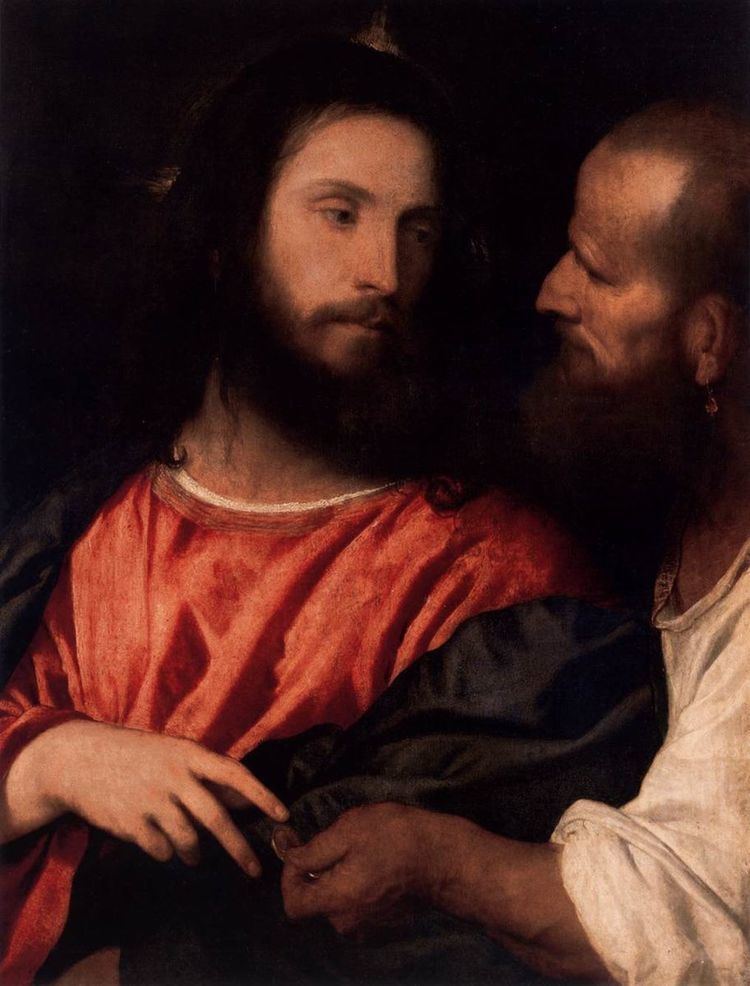Movements 6 Vocal SATB choir and solo | Cantata text anonymous | |
 | ||
Chorale "Mache dich, mein Geist, bereit"by Johann Christoph Rube | ||
Wohl dem, der sich auf seinen Gott (Fortunate the person who upon his God), BWV 139, is a church cantata by Johann Sebastian Bach. He composed the chorale cantata in Leipzig for the 23rd Sunday after Trinity and first performed it on 12 November 1724. It is based on the hymn by Johann Christoph Rube (1692).
Contents
History and words
Bach composed the chorale cantata in his second year in Leipzig for the 23rd Sunday after Trinity. The prescribed readings for the Sunday were from the Epistle to the Philippians, "our conversation is in heaven" (Philippians 3:17–21), and from the Gospel of Matthew, the question about paying taxes, answered by Render unto Caesar... (Matthew 22:15–22). The cantata is based on the hymn in five stanzas by Johann Christoph Rube (1692). It is sung to the melody of Johann Hermann Schein "Machs mit mir, Gott, nach deiner Güt" (1628). An unknown poet kept the first and the last stanza as movements 1 and 6 of the cantata. He derived the inner movements as a sequence of alternating arias and recitatives from the inner stanzas. He based movement 2 on stanza 2, movements 4 and 5 on stanzas 3 and 4, and inserted movement 3, based on the gospel. According to Hans-Joachim Schulze in Die Welt der Bach-Kantaten (vol. 3), Andreas Stöbel, a former co-rector of the Thomasschule is a likely author of the chorale cantata texts, since he had the necessary theological knowledge, and Bach stopped the cantata sequence a few weeks after he died on 31 January 1725.
Bach first performed the cantata on 12 November 1724. He performed it again between 1732 and 1735, and between 1744 and 1747. For the second movement, the part for an obbligato violin is extant, but the part of a second obbligato instrument, possibly a second violin or an oboe d'amore, is missing.
Scoring and structure
The cantata in six movements is intimately scored for four vocal soloists (soprano, alto, tenor and bass), a four-part choir, two oboes d'amore, two violins, viola, and basso continuo.
- Chorale: Wohl dem, der sich auf seinen Gott
- Aria (tenor): Gott ist mein Freund; was hilft das Toben
- Recitative (alto): Der Heiland sendet ja die Seinen
- Aria (bass): Das Unglück schlägt auf allen Seiten
- Recitative (soprano): Ja, trag ich gleich den größten Feind in mir
- Chorale: Dahero Trotz der Höllen Heer!
Music
The opening chorus is a chorale fantasia. Strings and the two oboes d'amore play concertante music, to which the soprano sings the cantus firmus, and the lower voices interpret the text, speaking of "child-like trust of the true believer" in the first section, of "all the devils" in the second, "he nonetheless remains at peace" in the third. The key is E major, a rare, "rather extreme" key at Bach's time, as musicologist Julian Mincham notes: only about a third of Bach's chorale cantatas begins in a major key at all, and only two in E major, the other being Liebster Gott, wenn werd ich sterben? BWV 8, "a musing on death and bereavement and one of his most personal works".
In the tenor aria, movement 2, the motif of the first line "Gott ist mein Freund" (God is my friend) appears again and again in the voice and the instruments. The voice is "more convoluted" when the raging enemies and the "Spötter", those who ridicule or mock, are mentioned.
In movement 4, a bass aria with solo violin and the oboes d'amore in unison, Bach changes seamlessly from loud double-dotted music to "the most nonchalant texture imaginable" in 6/8 time to illustrate the text "But a helping hand suddenly appears", compared by John Eliot Gardiner to "God's outstretched hand as painted by Michelangelo in the Sistine Chapel".
